#wireless EV charging
Text
youtube
Revisiting unlocking the future of electric vehicles with wireless EV charging. Get Surfshark VPN at https://surfshark.deals/undecided and enter promo code UNDECIDED for 83% off and 3 extra months for free! Most of us take for granted being able to toss our phones onto a charging pad to top them up, but what if we could wirelessly charge our electric cars too? No more remembering to plug in your EV when you arrive at work or get home. Without having to even think about it, your car would always be charged up and ready to go. At the beginning of 2020 I spoke to a company that’s leading the charge in wireless electric vehicle charging and I thought it was time to revisit the topic to see where things stand … and even get a chance to wirelessly charge a Tesla Model 3. There’s been a lot of progress in the past two years. Is wireless EV charging almost here? Let’s take a look.
Watch The Future of Solid State Wind Energy - No More Blades https://youtu.be/nNp21zTeCDc?list=PLn...
Also Watch EV wireless charging - powering the future of autonomous vehicles https://youtu.be/6qoHCMy-laA?list=PLn...
The screen I added to my Tesla Model 3:
https://geni.us/CBZ0h
Video script and citations:
https://undecidedmf.com/unlocking-the...
Follow-up podcast:
Video version - https://www.youtube.com/channel/UC4-a...
Audio version - http://bit.ly/stilltbdfm
Join the Undecided Discord server:
https://geni.us/undecided-discord
👋 Support Undecided on Patreon!
https://www.patreon.com/mattferrell
00:00 - Intro
01:02 - Magnetic Resonance Charging
02:58 - Where do things stand today?
04:43 - The challenges
05:46 - Partnerships
06:20 - The user experience
09:00 - What it unlocks
⚙️ Gear & Products I Like
Tesla and smart home gear:
https://kit.co/undecidedmf
Great sustainable products for your home:
https://geni.us/buildwithrise
Undecided Amazon store front:
https://geni.us/undecidedAmazon
Fun, nerdy t-shirts:
http://bit.ly/UndecidedShirts
Abstract Ocean Tesla Accessories:
15% Discount - Code: "Undecided"
http://bit.ly/UndecidedAO
Jeda Tesla Wireless Charger/USB Hub:
http://bit.ly/UndecidedJeda
Tesla Referral Code:
Get 1,000 free supercharging miles
or a discount on Tesla Solar & Powerwalls
https://ts.la/matthew84515
Visit my Energysage Portal:
Research solar panels and get quotes for free!
http://www.energysage.com/p/undecided/
Or find community solar near you:
https://communitysolar.energysage.com...
👉 Follow Me
Twitter
https://twitter.com/mattferrell
https://twitter.com/undecidedMF
Instagram
https://www.instagram.com/mattferrell
https://www.instagram.com/undecidedmf
Facebook
https://www.facebook.com/undecidedMF/
Website
https://undecidedmf.com
📺 YouTube Tools I Recommend
Audio file(s) provided by Epidemic Sound
http://bit.ly/UndecidedEpidemic
TubeBuddy
https://www.tubebuddy.com/undecided
VidIQ
https://vidiq.com/undecided
I may earn a small commission for my endorsement or recommendation to products or services linked above, but I wouldn't put them here if I didn't like them. Your purchase helps support the channel and the videos I produce. Thank you.
#undecided with matt ferrell#solarpunk#ev#electric vehicle#wireless charging#charging#vehicle#wireless EV charging#electric cars#cars#Tesla#tesla model 3#Youtube
3 notes
·
View notes
Text
The Impact of Fast-Charging Technology on the EV Charging Cable Market
The global electric vehicle (EV) charging cable market is poised for significant growth, driven by the increasing adoption of electric vehicles and the need for efficient and reliable charging solutions. As the demand for EVs continues to rise, the market for EV charging cables is expected to reach $3.45 billion by 2031, growing at a compound annual growth rate (CAGR) of 18.1% from 2022 to 2031.
Market Trends and Drivers
The EV charging cable market is driven by several key trends and factors. The increasing adoption of electric vehicles, particularly in regions such as Europe and Asia, is a major driver of the market. Governments worldwide are implementing policies to promote the adoption of EVs, which is expected to further boost demand for EV charging cables. Additionally, the development of fast-charging technology and the need for efficient and reliable charging solutions are also driving the market.
Key Players and Market Segmentation
The EV charging cable market is dominated by several key players, including Aptiv, Besen International Group Co., Ltd., BRUGG Group AG, Chengdu Khons Technology Co., Ltd., DYDEN CORPORATION, Guangdong OMG Transmitting Technology Co. Ltd., Leoni AG, Phoenix Contact, Sinbon Electronics, and TE Connectivity. The market is segmented based on power type, application, cable length, shape, charging level, and region. The power type segment includes alternate charging (AC) and direct charging (DC), while the application segment is categorized into private charging and public charging. The cable length segment includes 2–5 meters, 6–10 meters, and above 10 meters, and the shape segment includes straight and coiled.
Regional Analysis
The EV charging cable market is analyzed across several regions, including North America, Europe, Asia-Pacific, and LAMEA. The Asia-Pacific region dominated the global EV charging cables market in 2022, with China holding the dominant position. The North American market is expected to grow significantly due to the increasing adoption of EVs and the need for efficient and reliable charging solutions.
Challenges and Opportunities
Despite the significant growth potential of the EV charging cable market, there are several challenges that need to be addressed. High operational costs of EV charging cables and the adoption of wireless EV charging technology are some of the key challenges facing the market. However, the increasing adoption of EVs and the need for efficient and reliable charging solutions are expected to drive the market growth.
Conclusion
The EV charging cable market is poised for significant growth, driven by the increasing adoption of electric vehicles and the need for efficient and reliable charging solutions. The market is dominated by several key players and is segmented based on power type, application, cable length, shape, charging level, and region. The Asia-Pacific region dominated the global EV charging cables market in 2022, and the North American market is expected to grow significantly due to the increasing adoption of EVs and the need for efficient and reliable charging solutions.
#EV Charging Cable Market#electric vehicle charging cables#EV charging solutions#charging cable technology#wireless EV charging#sustainable EV charging#EV infrastructure#charging cable advancements#electric vehicle market#EV cable manufacturers#fast charging cables#recyclable charging cables#universal charging standards#regional EV markets#smart grid EV charging#future of EV charging
0 notes
Text
Exploring the Latest Innovations in Electric Vehicle Charging
The adoption of electric vehicles (EVs) is on the rise globally, and as a result, the demand for efficient and accessible EV charging infrastructure has increased dramatically. To meet this growing need, innovators and industries are constantly pushing the boundaries of technology and developing cutting-edge solutions to address the challenges associated with EV charging. In this blog post, we…
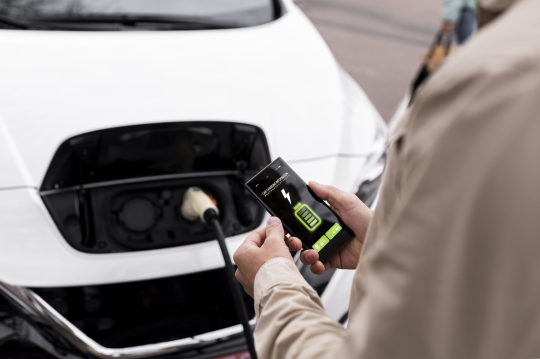
View On WordPress
#Bidirectional Charging#Dynamic Charging#Electric Mobility Innovations#Electric Vehicles (EV)#EV Charging Technology#Future of Transportation#Green Technology#IONITY Network#Renewable Energy Integration#sustainable transportation#Tesla Supercharger#Ultra-Fast Charging Stations#Vehicle-to-Grid (V2G)#Wireless EV Charging
1 note
·
View note
Text
I swear some days it really is just one thing after another :/
#eve's thoughts#fuck Adobe man.#what do you MEAN I don’t have that font file installed I just checked that a month ago???#AND my wireless mouse is dead AND the charging cord is apparently off gallivanting somewhere#what the FUCK man give me a BREAK
0 notes
Text
Contactless Car Charging: Unlocking the Future of Wireless Energy Transfer
Imagine a world where electric vehicles seamlessly charge without the need for cables or plugs. Contactless car charging, also known as wireless energy transfer, is an innovative technology that holds the potential to revolutionize the way we power electric vehicles (EVs). Here, we will explore the concept of contactless car charging, examine its current state, and envision its possibilities in…

View On WordPress
#BMW#contactless charging#ev revolution#EVs#fast-charging#green technology#inductive charging#outdoor charging#wireless energy transfer
0 notes
Link
#Wireless Ev Charging Market size#Wireless Ev Charging Market share#Wireless Ev Charging Market price
0 notes
Link
Wireless EV Charging Market by Power Supply Range (3-<11, 11-50 & >50 KW), Application (Home & Commercial), Distribution Channel (Aftermarket & OE), Component, Charging System, Propulsion, Vehicle Type & Region
#Wireless EV Charging Market#WirelessEVChargingMarket#WirelessEVCharging#WirelessCharging#WirelessChargingMarket#EVMarket#EVs#ElectricVehicles
0 notes
Text
Wireless EV Chargers Facilitating Hassle-Free Long Drives
The International Energy Agency (IEA) reveals that the global stock of plug-in hybrid vehicles (PHEVs) , battery electric vehicle (BEVs) , and fuel cell electric vehicle (FCEVs) stood at 3,346,713 units, 6, 850,327 units, and 31,225 units, respectively, in 2020. By 2030, the stock of PHEVs, FCEVs, and BEVs will rise to 44,355,904, 1,152,588, 79,975,992, respectively 2030. Whereas, the global stock of BEV and PHEV electric buses is expected to surge from 515,400 in 2020 to 3,217,713 by 2030 and 81,898 in 2020 to 358,921 by 2030, respectively.
Thus, the surging adoption of EVs will augment the need for fast charging options, owing to which the wireless EV charging market will advance at a significant rate during 2020–2030. To establish a fast EV charging infrastructure, several charging station developers are focusing on investing in research and development (R&D) in wireless technology. The installation of dynamic wireless systems on EVs allows them to be charged while on the move. Moreover, the absence of charging cables in wireless systems makes it more user-friendly than cable charging systems.
The aforementioned chargers are based on wireless charging system (CWCS), inductive wireless charging system (IWC), permanent magnetic gear wireless charging system (PMWC), and resonant inductive wireless charging system (RIWC) operating techniques. Wireless EV chargers based on these operating techniques are being installed in BEVs and PHEVs to reduce their charging time and eliminate the range anxiety issues among consumers. With the increasing production of BEVs, on account of massive government support, wireless EV chargers will be integrated into such vehicles in larger numbers, as compared to PHEVs.
1 note
·
View note
Text
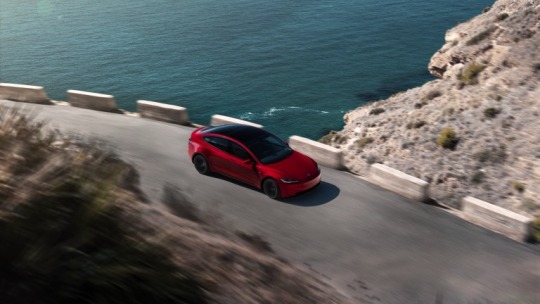
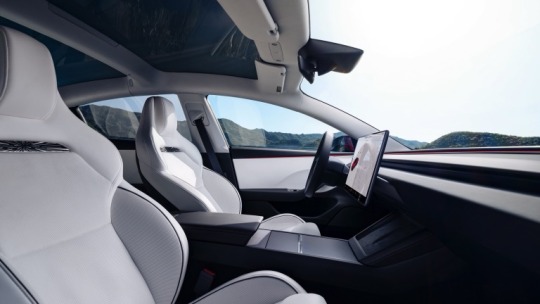
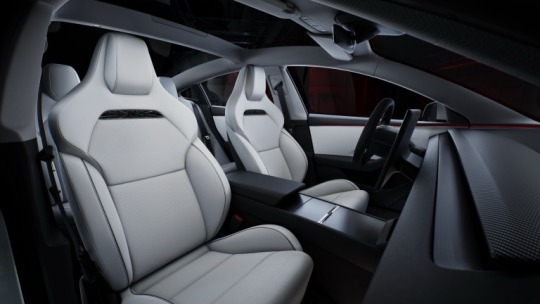



The new Model 3 EV will be well-stocked in specification with Performance design, sports seats, adaptive suspension, adaptive damping, ventilated seats, 20” Warp alloys, performance brakes, 15.4” centre touchscreen, 8” second row display in the back, studio sound quality with the 17-sepaker system (including dual subwoofers and amplifiers), phone key integration, wireless phone charging, glass roof, carbon fibre details inside, navigation and Track Mode. The Enhanced Autopilot (at £3,400) adds navigation on Autopilot and auto lane change with the Full Self-driving Capability (at £6,800) adding more autonomous driving including traffic light and stop control.
On colours, select from Pearl White, Deep Blue, Solid Black, Ultra Red and the new Stealth Grey. Only the 20” alloys are available. But you can select your own interior choice with the standard black or the chargeable white available. Other than your dedicated charge point, you are good to go.
But how does the Model 3 Performance perform? This AWD Saloon will have a 75 kWh usable battery which will offer 0 – 62 times of 3.3 seconds, 163 mph top speeds and 461 kW (or 618hp). Expect a combined winter range of 235 miles with warmer weather allowing for 325 miles – a 285 mile combined. On charging, the 11 kW AC max will allow 8 hour and 15 mins 0 – 100% charging times with the 250 kW DC maximum allowing 27 minute 10 – 80% times. A cargo volume of 594L is available with this car. It has a vehicle fuel equivalent of 152 mpg. It also no confirmed Bidirectional capabilities yet. The Heat Pump is standard.
3 notes
·
View notes
Text
This Japanese city is piloting EV wireless charging at traffic lights | Electrek
🤔
2 notes
·
View notes
Text
Electric Vehicle Charging Networks Market Projections: Global Industry Analysis and Forecast (2023-2032)
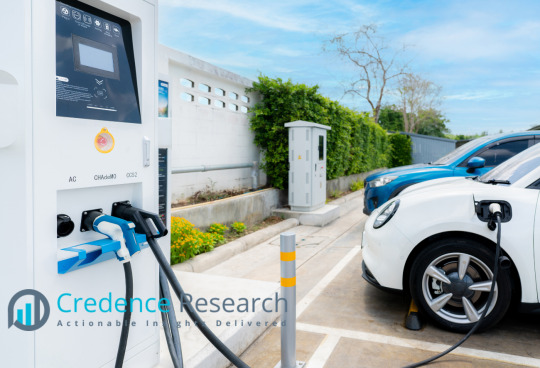
The global demand for electric vehicle charging networks was valued at USD 12.5 million in 2022 and is expected to reach USD 269.59 million in 2030, growing at a CAGR of 46.80% between 2023 and 2030.
Electric vehicle (EV) charging networks market is a rapidly expanding sector, driven by the global shift towards sustainable transportation and the increasing adoption of electric vehicles. This market includes the infrastructure and services necessary to provide reliable and accessible charging solutions for EV owners, encompassing a variety of charging stations such as Level 1, Level 2, and DC fast chargers.
Technological advancements are enhancing the efficiency and speed of charging stations, while innovations such as smart grids and integrated renewable energy sources are making charging networks more sustainable. The market is also witnessing increased collaboration between automakers, utility companies, and technology firms to develop seamless and user-friendly charging experiences. Despite challenges such as high initial infrastructure costs and the need for standardization, the EV charging networks market is poised for significant growth, driven by the accelerating adoption of electric vehicles and the continuous advancements in charging technologies.
Electric Vehicle Charging Networks: Key Points
Types of Charging Stations:
Level 1: Slow chargers using standard household outlets (120V).
Level 2: Faster chargers using 240V outlets, commonly found in homes and public spaces.
DC Fast Chargers: Ultra-fast charging stations offering rapid charging, typically found in public and highway locations.
Technological Advancements:
Development of ultra-fast chargers, wireless charging, and smart charging solutions.
Integration of renewable energy sources and smart grid technology to enhance efficiency and sustainability.
Market Growth Drivers:
Increasing adoption of electric vehicles worldwide.
Government initiatives and policies promoting sustainable transportation.
Rising consumer demand for accessible and reliable EV charging options.
Challenges:
High initial infrastructure costs.
Need for standardization and interoperability among different charging networks.
Managing grid impact and ensuring reliable energy supply.
Expansion Strategies:
Rapid expansion of charging networks in urban areas, highways, and remote locations.
Collaborations between governments, utilities, and private companies.
User Experience:
Development of user-friendly apps and platforms for real-time information on charger availability, pricing, and booking.
Unified payment systems and improved interoperability across different networks.
Sustainability Initiatives:
Integration of solar and wind power into charging stations.
Use of battery storage systems to enhance energy independence and reduce carbon footprint.
Commercial and Fleet Solutions:
Tailored solutions for commercial fleets, including centralized charging hubs and depot charging.
Use of telematics and fleet management software to optimize charging schedules.
Future Outlook:
Continued market growth driven by increasing EV adoption and technological advancements.
Ongoing innovation in charging technologies and business models to meet evolving consumer and industry needs.
Key Players-
Tesla
ChargePoint
EVgo
Electrify America
Shell
ABB
Siemens
Blink Charging
Greenlots
Nuvve
More About Report- https://www.credenceresearch.com/report/electric-vehicle-charging-networks-market
Innovative Trends in the Electric Vehicle Charging Networks Market
Ultra-Fast Charging Stations:
Development of ultra-fast DC chargers that can significantly reduce charging times, enabling EVs to be charged to 80% in 15-20 minutes.
Implementation of 350 kW chargers that cater to the latest EV models with higher charging capacities.
Wireless Charging:
Introduction of wireless or inductive charging technology that allows EVs to charge without physical connectors, enhancing convenience for users.
Pilot projects and small-scale deployments in urban areas and public transportation systems.
Smart Charging Solutions:
Integration of smart grid technology to manage and optimize the distribution of electricity, ensuring efficient use of resources and minimizing grid strain.
Use of artificial intelligence and machine learning to predict charging patterns and dynamically adjust charging speeds and schedules.
Vehicle-to-Grid (V2G) Technology:
Development of V2G systems that enable EVs to return stored energy back to the grid, helping balance supply and demand and providing additional revenue streams for EV owners.
Pilot programs demonstrating the potential of V2G in enhancing grid stability and supporting renewable energy integration.
Renewable Energy Integration:
Increased use of renewable energy sources like solar and wind power in charging stations to reduce the carbon footprint of EV charging.
Installation of solar panels and battery storage systems at charging hubs to provide clean energy and improve energy independence.
Mobile Charging Solutions:
Deployment of mobile charging units that can be dispatched to EV owners in need of emergency charging, enhancing the convenience and reliability of charging services.
Use of portable battery packs and mobile charging vans to provide flexible charging options.
Battery Swapping Stations:
Introduction of battery swapping technology, allowing EV owners to quickly exchange depleted batteries for fully charged ones, significantly reducing downtime.
Adoption of battery swapping in specific markets and applications, such as fleet operations and public transportation.
Expansion of Charging Networks:
Rapid expansion of public and private charging networks, with increased focus on high-density urban areas, highways, and remote locations.
Collaboration between governments, utility companies, and private enterprises to develop comprehensive and accessible charging infrastructure.
User-Friendly Charging Platforms:
Development of user-friendly apps and platforms that provide real-time information on charger availability, pricing, and booking options.
Implementation of unified payment systems and interoperability standards to simplify the charging process across different networks and providers.
Integration with Autonomous Vehicles:
Exploration of autonomous vehicle charging solutions, where self-driving cars can navigate to charging stations and connect autonomously.
Development of robotic charging systems to automate the connection process for autonomous EVs.
Fleet and Commercial Charging Solutions:
Tailored charging solutions for commercial fleets, including centralized charging hubs and depot charging infrastructure.
Use of telematics and fleet management software to optimize charging schedules and reduce operational costs.
Innovative Business Models:
Adoption of new business models such as subscription-based charging services, pay-per-use, and membership plans to attract a wider customer base.
Introduction of bundled services, combining home charging solutions with public network access for comprehensive charging coverage.
Segmentation
By Charging Station Types
Public Charging Stations
Home Charging Stations
Workplace Charging Stations
By Charging Power Levels
Level 1 Charging
Level 2 Charging
DC Fast Charging (Level 3)
By Business Models
Open Access Networks
Closed/Proprietary Networks
By Charging Network Operators
Independent Charging Operators (ICOs)
Automaker-Owned Networks
Browse the full report – https://www.credenceresearch.com/report/electric-vehicle-charging-networks-market
Browse Our Blog: https://www.linkedin.com/pulse/electric-vehicle-charging-networks-market-analysis-oyuaf
Contact Us:
Phone: +91 6232 49 3207
Email: [email protected]
Website: https://www.credenceresearch.com
0 notes
Text
Asia-Pacific Electric Scooter Market Worth $ 625.03 Billion and 266.04 Million Units by 2029
Meticulous Research®, a premier market research firm, has recently unveiled a comprehensive report titled “Asia-Pacific Electric Scooter Market,” delving into various facets of this burgeoning industry. Projections suggest a remarkable journey ahead, with the market poised to exhibit a robust CAGR of 28.9% from 2022 to 2029, surging to a value of $625.03 billion by the end of the forecast period. In terms of volume, the market is anticipated to reach 266.04 million units by 2029, propelled by a steady CAGR of 26.4%.
Driving this growth are a confluence of factors including supportive governmental policies, escalating environmental consciousness, and substantial investments from Original Equipment Manufacturers (OEMs) and ride-hailing enterprises into micro-mobility initiatives. Moreover, the declining costs of batteries present notable opportunities for market expansion.
However, challenges loom, notably the substantial initial investments required for procuring electric two-wheelers and the escalating instances of theft and vandalism in certain Asian regions. Additionally, concerns such as range anxiety and inadequate cycling infrastructure in developing nations within the Asia-Pacific region pose significant hurdles.
The report segments the Asia-Pacific electric scooter market based on various parameters including vehicle type, power output, battery technology, motor type, charging methodology, end user, and country. Notably, it provides a meticulous analysis of industry competitors and offers insights at the national level.
In terms of vehicle types, the market is divided into electric motorcycles and e-scooters & bikes. Electric motorcycles presently dominate the segment owing to favorable governmental policies promoting electric mobility and increasing consumer awareness regarding environmental sustainability. However, e-scooters & bikes are expected to witness the highest growth rate, driven by government subsidies and their burgeoning use in courier and e-commerce delivery services.
Power output segmentation reveals three categories: less than 3.6 kW, 3.6 kW to 7.2 kW, and 20 kW to 100 kW. The less than 3.6 kW segment currently commands the largest market share, primarily due to its utility as a cost-effective last-mile transportation solution. Conversely, the 3.6 kW to 7.2 kW segment is anticipated to witness the highest growth, buoyed by its cost-effectiveness and environmental friendliness.
Battery technology segmentation includes sealed lead acid, lithium-ion, and lithium-ion polymer batteries. While lithium-ion batteries currently dominate the market, lithium-ion polymer batteries are projected to exhibit the highest growth rate, favored for their cost-efficiency without compromising performance.
Motor types encompass hub motors and mid-drive motors, with hub motors leading the market owing to their flexibility and stability, particularly in all-wheel-drive scenarios. Charging types include connector charging and wireless charging, with the latter anticipated to witness the highest growth owing to its convenience.
End-user segmentation spans government institutions, academic institutes/universities, business organizations, micro-mobility service providers, individuals, and others. Currently, business organizations hold the largest market share, driven by governmental initiatives promoting EV adoption and last-mile transportation solutions.
Geographically, China commands the largest share of the market, driven by robust governmental support and strategic business developments. However, the Philippines is expected to exhibit the highest growth rate, buoyed by local governmental initiatives promoting investments and the adoption of cleaner technologies.
Download Sample Report Here: https://www.meticulousresearch.com/download-sample-report/cp_id=5242
The key players operating in Asia-Pacific electric Scooter market are Yamaha Motor Co., Ltd. (Japan), Yadea Group Holdings Ltd. (China), Niu Technologies (China), Fuji-Ta Bicycle Co., Ltd. (China), Zhejiang Minimotors Bike Co., Ltd. (China), Gogoro Inc. (Taiwan), Ather Energy Pvt. Ltd. (India), Revolt motors (India), Hero MotoCorp Ltd. (India) and Dongguan Tailing Electric Vehicle Co., Ltd. (China).
Key Questions Answered in the Report:
Which are the high growth market segments in terms of vehicle type, power output, battery technology, motor type, charging type, end user, and country?
What is the historical market size for the Asia-Pacific electric Scooter market?
What are the market forecasts and estimates for the period 2022–2029?
What are the major drivers, restraints, opportunities, and challenges in the Asia-Pacific electric Scooter?
Who are the major players in the market, and what are their market shares?
Who are the major players in various countries?
How is the competitive landscape for the Asia-Pacific electric Scooter market?
What are the recent developments in the Asia-Pacific electric Scooter market?
What are the different strategies adopted by the major players in the market?
Which are the high-growth countries in the Asia-Pacific electric Scooter market?
Who are the local emerging players in the Asia-Pacific electric Scooter market, and how do they compete with other players?
Contact Us:
Meticulous Research®
Email- [email protected]
Contact Sales- +1-646-781-8004
Connect with us on LinkedIn- https://www.linkedin.com/company/meticulous-research
0 notes
Link
0 notes
Text
Upcoming Electric Car Toyota bZ4x in India 2024 – Features, Specs & More

Expected to grace the Indian automotive scene by mid-2024, the Toyota bZ4X EV is poised to make a grand entrance, heralding Toyota’s significant leap into the electric vehicle domain. Developed in collaboration with Subaru, the bZ4X, also known as Solterra, is set to captivate the market with its estimated price tag of Rs. 27 Lakh and a promise of nationwide availability.
Let’s delve into the specifics of this forthcoming electric marvel.
EV Motor, Power, and Performance: The bZ4X offers two powertrain options to cater to varied driving preferences. The front-wheel-drive model boasts 201 horsepower, while the all-wheel-drive version ups the ante with 215 horsepower. Initial test drives have showcased perky acceleration, coupled with commendable ride quality and responsive steering.
Range, Charging & Battery Life: Equipped with either a 63.4-kWh or 65.5-kWh battery pack, the bZ4X promises a range of up to 252 miles (Limited/XLE) for the front-wheel-drive variant and 228 miles for the all-wheel-drive version. Charging is facilitated by a 6.6-kW onboard charger, enabling an 80 percent charge in under an hour at a DC fast-charger.
Fuel Economy: Efficiency ratings for the bZ4X are impressive, with city ratings as high as 131 MPGe. Real-world testing, however, revealed a slightly lower highway rating of 86 MPGe for the dual-motor Limited model.
Interior, Comfort & Cargo: Inside, the bZ4X offers a spacious environment with a digital gauge display, a 12.3-inch central touchscreen, wireless smartphone charging, and ample storage space. The rear cargo hold provides 26 to 28 cubic feet of space.
Infotainment and Connectivity: All models feature a 12.3-inch infotainment touchscreen with wireless Android Auto & Apple CarPlay, cloud-based navigation, and onboard Wi-Fi. Optional upgrades include a nine-speaker JBL stereo system.
Safety and Driver-Assistance Features: Standard safety features include adaptive cruise control, pedestrian detection, automated emergency braking, and lane-keeping assist, aligning with Toyota’s commitment to driver safety.
Conclusion: As the automotive industry embraces electrification, the Toyota bZ4X emerges as a compelling option, blending comfort, technology, and safety. Despite some limitations in power and range, its imminent arrival signals Toyota’s dedication to sustainable mobility solutions in the evolving electric vehicle market of 2024.
Also Read
Know All About Tata Curvv EV – Price, Features, Launch Date & More
0 notes